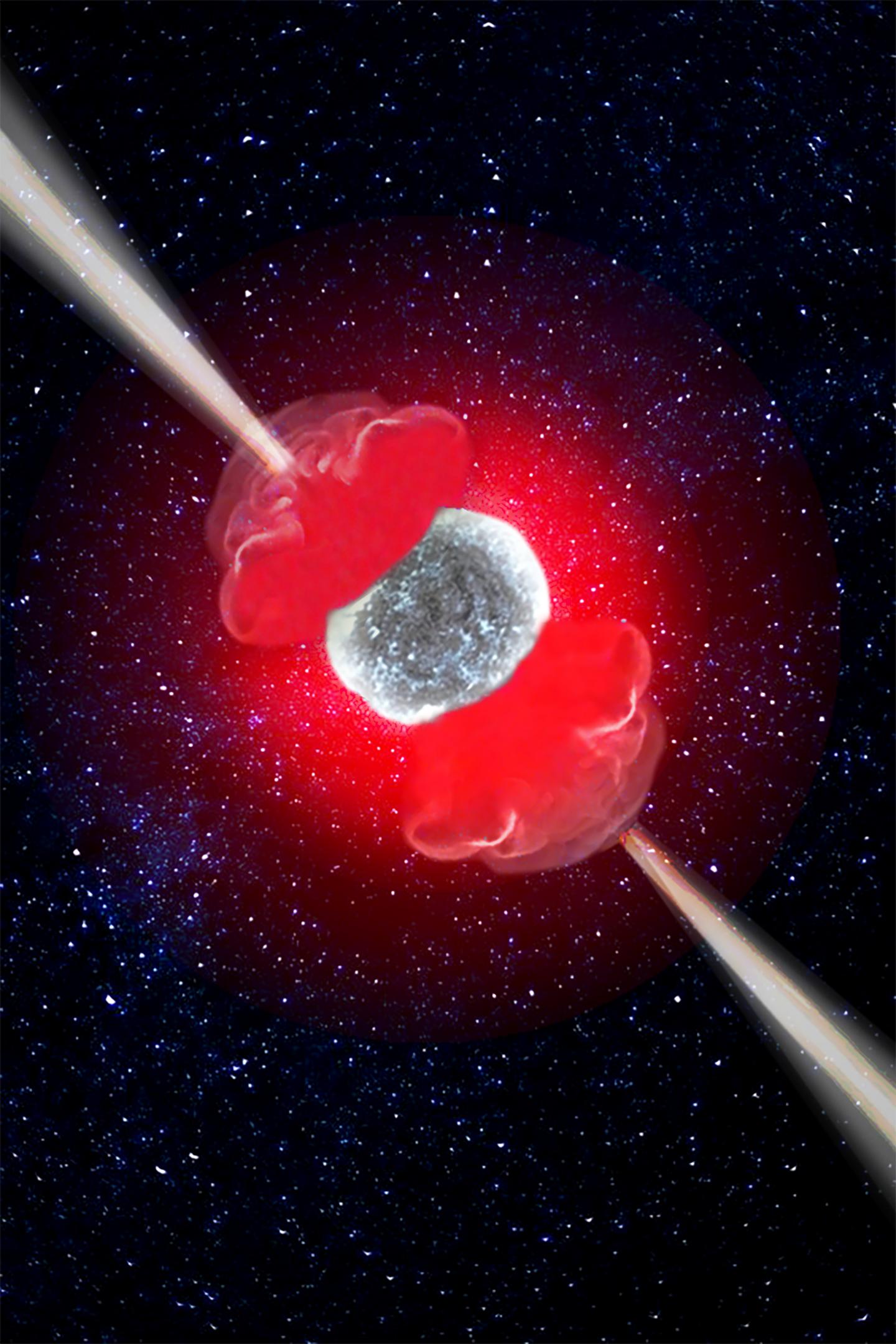Heavy stars die in a cocoon
When it’s time for particularly heavy stars to die, they don’t go without a lot of fireworks. If a star that has run out of fuel has a mass greater than 25 times the mass of the Sun, its core will collapse and form a neutron star or a black hole, and gigantic jets of matter will be emitted at its poles. These jets penetrate through the outermost layers of the star and generate so much gamma radiation that astronomers can observe these jets as flashes (Gamma Ray Bursts, GRBs).
This phenomenon has been known for a while. In a paper in the scientific journal, Nature, researchers have now described another component of a hypernova. Not every explosion of this kind is linked with a GRB, of course. The jets, as the researchers show, form a cocoon of star matter around the star and this cocoon absorbs a portion of the energy from the jets. Sometimes, there isn’t enough energy left over to produce a GRB – the jets fall back into the star and are essentially squashed.

